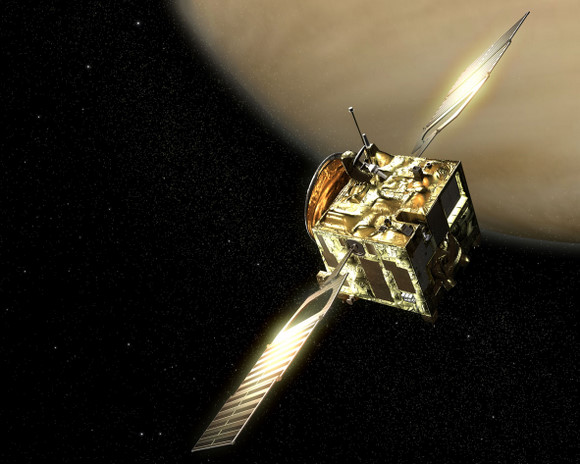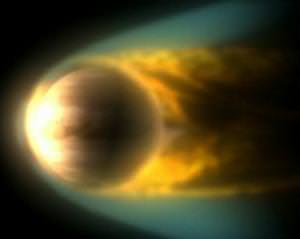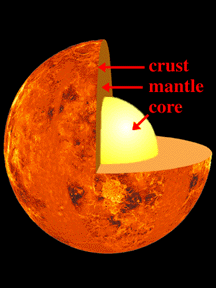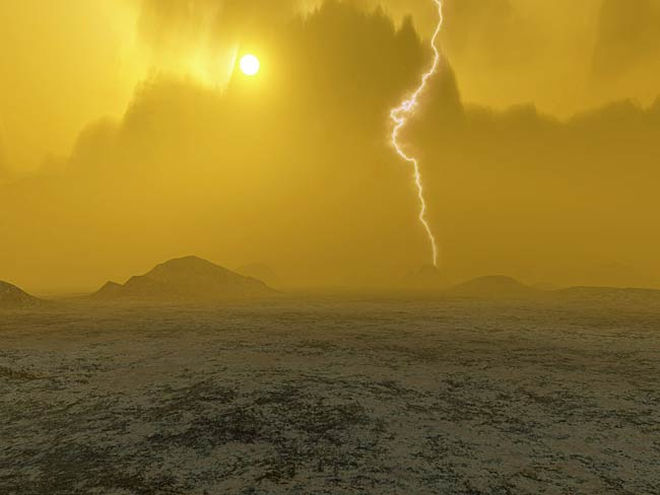[/caption]
Earth has the Moon, Mars has two moons, and even tiny Pluto has 3 satellites. So how many satellites does Venus have? Well, Venus has no natural satellites today. However, it’s possible that Venus did have natural satellites in the past.
Perhaps the biggest evidence that Venus once had a natural satellite is its current rotation. Seen from above, all the rest of the planets in the Solar System rotate counter-clockwise. That’s why eastern countries have an earlier sunrise than western countries. But the rotation of Venus is very slow and backwards. Seen from above, Venus rotates clockwise. In fact, a day on Venus lasts 243 Earth days, while a year on Venus lasts almost 225 days.
With this slow, backwards rotation, it’s possible that Venus experienced a catastrophic impact in its early history, just like the impact that created the Earth’s moon. While our Moon formed out at a stable point where it’s been slowly drifting away, it’s possible that a moon around Venus formed at an unstable distance and just crashed down into the planet.
It’s also possible that Venus captured an asteroid or two in the past, as astronomers believe happened with the Martian moons Phobos and Deimos. And this might also help us figure out what happened to satellites around Venus. Phobos is in an unstable orbit, and is expected to crash into Mars in the next 10 million years or so. So it’s possible that Venus had unstable moons orbiting it in the past, and they crashed into the surface. Venus is also much closer to the Sun than Earth, so the solar tides might just be too powerful to allow Mercury or Venus to have moons.
Unfortunately, the entire surface of Venus was resurfaced between 300-500 million years ago, and any evidence of crashing asteroids or moons has been covered up by volcanic flows. So perhaps we’ll never know if Venus ever had satellites.
Of course, Venus does have artificial satellites. At the time this article was written, ESA’s Venus Express was in orbit around Venus, capturing images and gathering data about our twin planet. And there could be more missions in the future.
We have written many articles about Venus for Universe Today. Here’s an article about Venus’ wet, volcanic past, and here’s an article about how Venus might have had continents and oceans in the ancient past.
If you’d like more information on Venus, check out Hubblesite’s News Releases about Venus, and here’s a link to NASA’s Solar System Exploration Guide on Venus.
We have recorded a whole episode of Astronomy Cast that’s only about planet Venus. Listen to it here, Episode 50: Venus.
References:
NASA StarChild: The Planet Venus
NASA Solar System Exploration: Planet Venus





